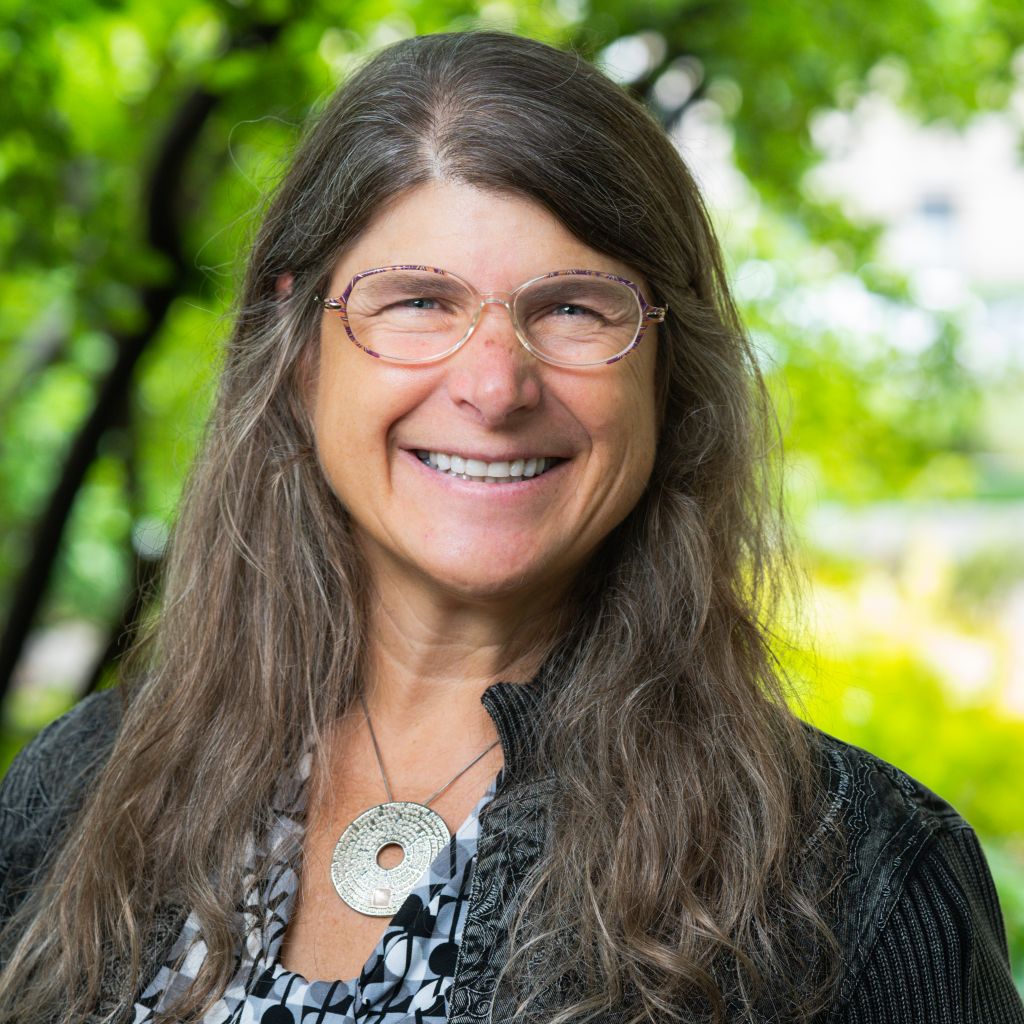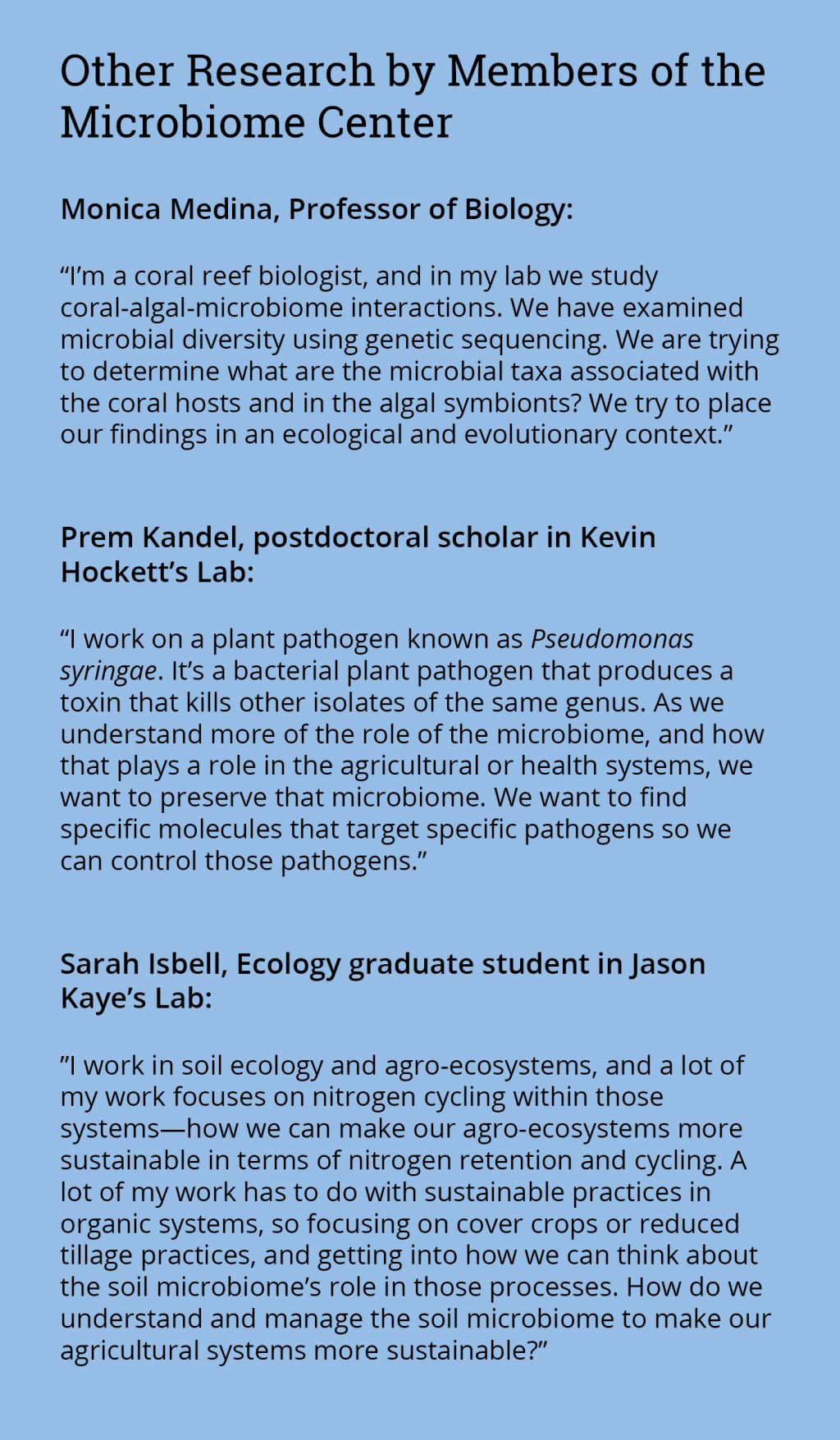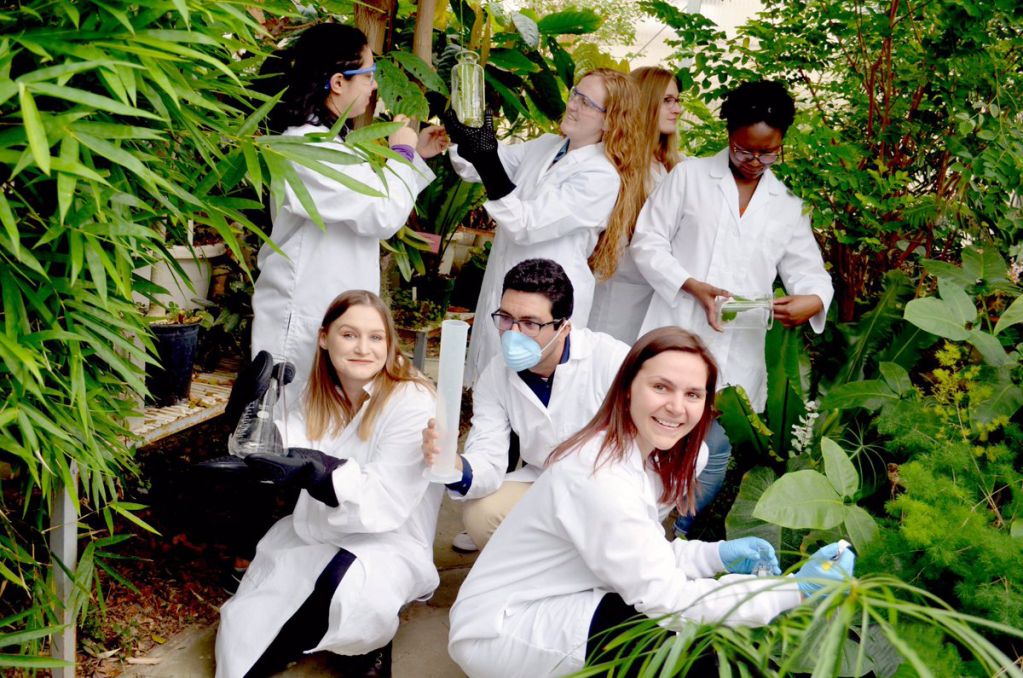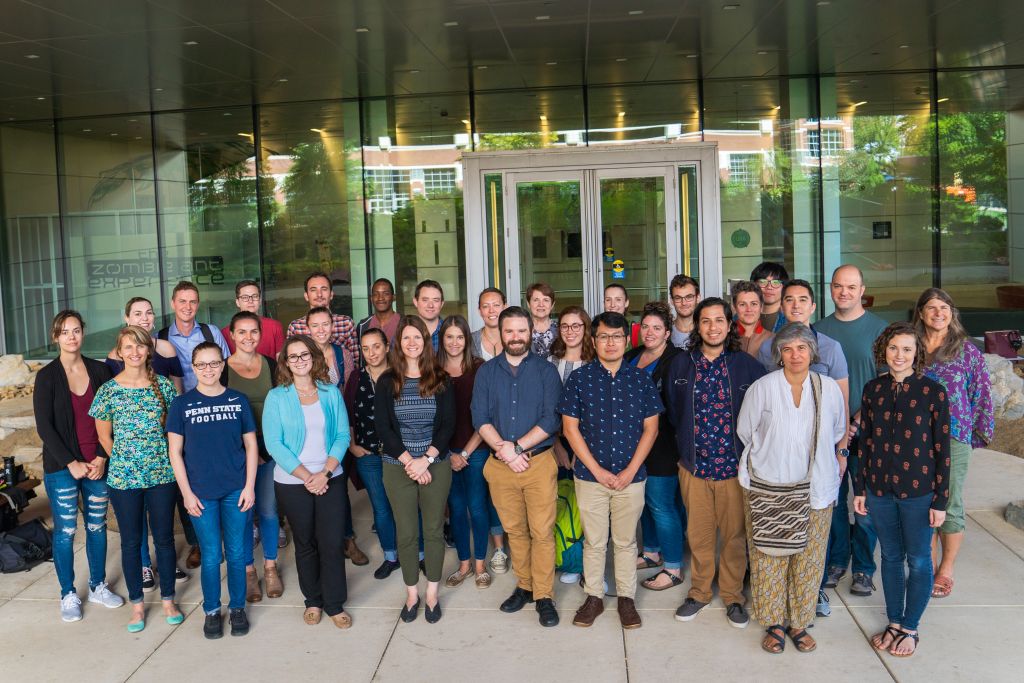Trailblazers: Carolee Bull Investigates the Microbiome
Editor's note: This article has been significantly revised since it was first published.

Interdisciplinary work truly defines Carolee Bull, director of Penn State's Microbiome Center and professor and department head of Plant Pathology and Environmental Microbiology. Her research centers around translational taxonomy which is the use of bacterial systematics, combined with epidemiology, and population biology of bacterial plant and mushroom pathogens and biological control agents to manage plant and mushroom diseases. Bull’s work spans some of the most pressing issues of food security, such as global seed health.
The term "microbiome" refers to the structure and function of the microbial community and its environment (including other organisms). This includes the understanding of relationships and functions at systems levels.

Although researchers have been studying the interactions between microorganisms in communities and their environments for over a century, microbiome inquiry has exploded due to the emergence of relatively affordable high-throughput sequencing technologies, which allow for the testing of formerly recalcitrant hypotheses. Ultimately, research will provide insight into whether organisms and the environment function as a system or not.
The goal of the Microbiome Center is to support transformative, interdisciplinary research in microbiomes. It fosters long-term working relationships and provides the resources needed to increase the diversity and breadth of interdisciplinary microbiome research at Penn State.
Most microbiome research centers focus on human microbiomes, but Penn State’s microbiome center is unique in the breadth of its scope, with core groups of researchers centered around symbiosis, arts, environmental habitats, phytobiomes, animal and human health and behavior, and CATS (Computation, Algorithms, Theory, and Statistics) among others.
“The center is unique in size and that members are interested in the entire spectrum of microbiome science from art and anthropology to zygotes and zoology. “We have lots of different types of artists involved in the center including architects and documentarians.” One artist researcher, Cynthia White of the Arts and Design Research Incubator is exploring microbial migrations of microbes from the environment into our lives.
“The fact that you’ve been in this room—because you have a microbial cloud around you— we can tell you were here. I’m sure I have a little bit of garden, cat, and YMCA microbiome on me and I have left a little bit of my microbiome there too,” Bull explained, laughing. Cynthia White is capitalizing on these techniques.

A transdisciplinary executive committee representing eight colleges, three campuses, and two institutes, drives the direction of the Center, and the first thing the group decided was that they should not limit their thinking about who should be involved in their work. Anyone who was interested or could benefit from being involved was welcome, and they specifically are working to include the Commonwealth and branch campuses. “It is a team effort and our new faculty are taking on leadership roles.”
In June, Bull attended the first US Microbiome Center Director’s meeting in Irvine, California, where she learned that the breadth and size of the PSU investment in this field has surpassed most academic institutions, especially for a center not dedicated to human health.
“By the end of spring 2020, we will have hired 18 new tenure-track faculty to work in microbiomes,” Bull explained. “And the College of Agricultural Sciences cluster that drove the development of the Center was originally only proposed to be seven faculty. Because of the importance of this field, departments, colleges, and campuses all over Penn State have made further investments in this field. That’s substantial.”
Bull is attracted to a diverse array of information, everything from the arts to science, and from the beginning of her work at the Microbiome Center, wanted to involve artists. “It’s clear that artists think and approach the world in a very different way than scientists do. Scientists use the scientific method; the artist uses a process of exploration that is very different.”
It’s not surprising that Bull herself is an artist as well as a scientist. She had a large dance troupe in California and was a professional belly dancer. The end goal of artists in a science field is not necessarily to enhance science communication, according to Bull; rather, they explore and approach knowledge by creating questions, patterns, and ways of knowing that may be different and just as valid.

As a leader, Bull has a long history of bringing people together from across disciplines. “If I think about the number one skill set that I bring to any organization, it’s that I’m a connector,” she said. “I consider myself a hub. The same thing happens for me; I really am a lateral thinker, so I pull connections from lots of places for my work or my play.”
During her career, Bull moved from the East Coast to the Monterrey Bay area, where she worked for the Department of Agriculture for 20 years. During a research appointment in the prolific vegetable-growing Salinas Valley, known as the “Salad Bowl of the US,” she mentored local students from the community college and state university and trained them in her lab.
“I worked with the sons and daughters of the Latinx field workers to train them in STEM. I have a long career in mentorship, and they taught me how to mentor them to be who they wanted to be, not who I want them to be,” she said.

“We have extended the professional development programs that I offer to the students, and postdocs, in my department to the members of the Microbiome Center. Mentorship in these essential skills is useful for all members (including our early career faculty) regardless of their ultimate career in government, industry, or academia. And that thrills me to no end, because then you’re really mentoring the person, and their diverse needs and interests.” Students and faculty leverage these trainings and unique programs they develop for the Center (see the article about the Microbiome Center’s pet DAWG) as a basis for their broader impacts for successful grants.